- Home
- Peter F. Hamilton
Salvation Lost
Salvation Lost Read online
Salvation Lost is a work of fiction. Names, characters, places, and incidents either are the product of the author’s imagination or are used fictitiously. Any resemblance to actual persons, living or dead, events, or locales is entirely coincidental.
Copyright © 2019 by Peter F. Hamilton
All rights reserved.
Published in the United States by Del Rey, an imprint of Random House, a division of Penguin Random House LLC, New York.
DEL REY and the HOUSE colophon are registered trademarks of Penguin Random House LLC.
LIBRARY OF CONGRESS CATALOGING-IN-PUBLICATION DATA
Names: Hamilton, Peter F., author.
Title: Salvation lost / Peter F. Hamilton.
Description: New York: Del Rey, [2019]
Identifiers: LCCN 2019014523 | ISBN 9780399178856 (hardcover) | ISBN 9780399178863 (ebook)
Subjects: | GSAFD: Science fiction.
Classification: LCC PR6058.A5536 S2513 2019 | DDC 823/.914—dc23
LC record available at https://lccn.loc.gov/2019014523
Ebook ISBN 9780399178863
randomhousebooks.com
Book design by Jo Anne Metsch, adapted for ebook
Cover design and illustration: Anna Kochman, based on an image © agsandrew/Shutterstock
v5.4
ep
Contents
Cover
Title Page
Copyright
Vayan Calling
London: June 25, 2204
The Assessment Team: Kruse Station, June 26, 2204
London: June 26, 2204
Vayan: 54th Year AB (After Bioforming)
Kruse Station: June 26, 2204
The Moon: June 26, 2204
New York: June 26, 2204
London: June 26, 2204
Vayan: 54th Year AB
London: June 26, 2204
London: June 27, 2204
Kruse Station: June 28, 2204
The Moon: June 28, 2204
Akitha: June 28, 2204
Vayan: 56th Year AB
London: June 29, 2204
London: June 29, 2204
New York: June 29, 2204
London: June 29, 2204
Vayan: 56th Year AB
Kruse Station: June 29, 2204
London: June 30, 2204
23 Librae: June 30, 2204
London: June 30, 2204
Mcdivitt Habitat: June 30, 2204
Vayan: 56th Year AB
New York: July 1, 2204
Richmond, London: July 2, 2204
Vayan: 56th Year AB
London: July 3, 2204
Kruse Station: July 4, 2204
London: July 4, 2204
Vayan: 56th Year AB
Cast of Characters
Timeline
By Peter F. Hamilton
About the Author
The dark, cold bulk of the Neána insertion ship had been traveling through interstellar space for twenty-two years before it flew across the faint twinkling specks of the star’s cometary belt. Half a light-year ahead, their G9 target star shone with a strong silver-white glare, casting its intense rays over a family of twelve planets. The fourth planet, a small, solid world, was emitting a bright babble of radio signals—a source that a Neána abode cluster had picked up when the Vayans began their tentative first broadcasts fifty-three years earlier.
A trio of moons orbited the warm, life-rich fourth planet in eccentric million-kilometer loops above its white clouds, lush continents, and deep blue oceans. Two of them were now also emitting electromagnetic signals; the radio waves were coming from the pioneering research bases that the native Vayans had recently constructed. Forty-seven different Vayan clans were operating space programs, putting aside their conflict-heavy history to collaborate on the great adventure out across the gulf of space.
The insertion ship flew in north of the solar ecliptic, shedding cold mass in irregular bursts like a black comet—a deceleration maneuver that took nineteen months. This was always the riskiest part of the voyage. The Vayans currently had thirty-two robot space probes traversing their solar system, sending back a great deal of crude science sensor data to their homeworld, as well as two high-powered observatories on the largest moon. The chance of one spotting the insertion ship was slim, but the controlling sentience took no chances. By the time it passed the innermost gas giant, it was down to twenty-five meters in diameter. It had no magnetic field, and the outer shell was fully radiation-absorbent in every spectrum, making it invisible to any telescopes.
As it closed on Vayan, it detected a spaceship departing one of the three stations in low orbit, a nuclear fission rocket sending it on a ten-month flight to the fifth planet. A crew of eleven Vayans was crammed into its small life-support cabin—emissaries of their species’ exuberant spirit, boldly outbound on their first interplanetary flight. Given that the Vayans had only launched their first chemical propellant rocket into orbit seventeen years earlier, the insertion ship’s controlling sentience was impressed by the speed of their technological progress.
During its long, lonely voyage between the stars, it had monitored the plethora of signals broadcast from Vayan, building up an extensive knowledge base of the species’ history and culture. Socially, they were organized along clan lines: a protective imperative bestowed by their distinct reproductive biology. Each female had up to ten mates, who all fertilized her egg cluster over the course of her fifteen-year adult life stage. When she was ready to gestate, she became immobile, feeding on the predigested pulp provided by her mates as her wombs began to swell. Giving birth to up to fifty infant Vayans was her last living act—though the insertion ship had recently picked up broadcasts speculating that modern medical techniques might be able to prolong female life after birth. From what the controlling sentience could understand, the concept was regarded as far-fetched and almost heretical. Though, so far, the Vayans seemed to have avoided the whole concept of deities and religion.
Physically, the Vayans had four legs supporting a rounded double-section body with eight upper arm-limbs. There was a long prehensile neck on the top, lifting up an ovoid cranium containing eight eyes and a combination ear–echo sonar organ, providing all-around perception. Their particular sensorium neurology meant they’d evolved past the concept of front and back and now had the capacity for free-ranging motion. That specific analytic ability gave the controlling sentience some difficulty when it came to developing equivalent thought routines for the six Vayan body biologics that it was now growing in its onboard molecular initiators. Fortunately, Vayan biochemistry was relatively easy to replicate.
As it closed to within a million kilometers of Vayan, the insertion ship discarded the last of its reaction mass as it performed a final deceleration maneuver. Now it was basically just falling toward the southernmost tip of the Farava continent. The lights of nighttime urban citadels sparkled across the continent, linked by the slender blue-green threads of bioluminescent transport rails. Tiny course correction ejecta refined the ship’s descent vector, steering it toward the coast, which was still thirty minutes from greeting the dawn. Even if some Vayan telescope chanced to find the ship now, it would simply appear to be a small chunk of natural space debris.
It hit the upper atmosphere and began to peel apart into six pear-shaped segments. The remaining matter broke away in fizzing sparks that produced a short-lived but beautifu
l starburst display streaking through the mesosphere. Below it, sheltered under their blanket of thick winter cloud, the clan packs of Gomarbab—the southernmost urban citadel on Vayan—remained oblivious to their interstellar visitor.
Each segment continued down, aerobraking with increasing severity as the atmosphere thickened around them. They slowed to subsonic velocity three kilometers above the surface, plunging through the clouds.
The segments were aimed at a small cove a few kilometers east of the urban citadel, where the gently undulating frost meadows ended in high cliffs atop pebble beaches. A hundred meters from the shore, six large splash plumes shot up into the air like thick geysers, crowning and splattering down on the slushy ice that bobbed about in the subzero saltwater.
The Neána metavayans floated to the surface. All that now remained of the insertion ship’s landing segments were thick layers of active molecule blocks, which covered their mottled blue-green hide like a blanket of translucent gel, insulating them from the cold. They began to swim ashore—an action that the native Vayans avoided as much as possible.
The beach was a narrow strip of sharp granite rocks, with brown bracken fronds shooting up from the wider cracks. A tall cliff loomed above it, with a narrow V-shaped gorge that offered a slippery pathway up to the frost meadows. The metavayans scrambled a short way up the incline as the pale dawn light began to seep through the murky clouds. Their last protective layer liquidized, draining down into the stones, where it would be flushed away by the next high tide.
“We made it,” one emitted in a stream of fast whistles: the local clan dialect.
“I was concerned about the landing impact,” said another, the female of the group. “Fortunately, I am undamaged. These bodies are sturdy.”
“My skin is puckering,” a third said. “This locale’s temperature is below optimum.”
The first one reached into a bag that had been strapped to his upper body and pulled out clothing modeled on commercial imagery that the Vayans had broadcast six months earlier. “I believe we should cover ourselves as quickly as—” He stopped in alarm.
A creature emerged from behind a large boulder at the base of the cliff. In all the years the insertion ship had monitored broadcasts from Vayan, no mention had been made of anything like it on the planet. The alien had a bipedal symmetry, with double-segment legs emerging from the base of a flat torso section. A pair of arms with limited articulation protruded from the top on either side of a squat neck that supported a bulbous head covered in tight, thin-looking ebony skin. Twin eyes gazed down at the metavayans. The creature was more than twice their height and walked toward them in an alarming motion that was mostly lurches.
It was clad in a thick green garment. An arm was extended, with the five small manipulator digits at the end curling around a metallic cylinder. An orifice on the creature’s head opened, and it produced a low, slow, hooting noise.
The cylinder began to talk in Vayan. “Pleased don’t be alarmed,” it said. “We have been monitoring your flight for several months. We didn’t try to contact the insertion ship directly, for fear it would self-destruct. We know how determined you are to protect your abode clusters.”
“What are you?” the first metavayan asked. “Do you share this world with the Vayan?”
The creature’s head twisted from side to side, and it began its ponderous hooting again. “My species is human, and my name is Yirella,” the translator told them. “I’m afraid there’s no such species as the Vayan. We invented them and their entire civilization in order to lure the Olyix here. We never expected a Neána ship to arrive as well. However, I welcome you to this star system, and invite you to join us in the fight against our common enemy.”
The warm twilight sky roofing London was a gentle strata of pastel colors: a rose-gold horizon washing up to deeper cerise that swiftly drained down to star-clad darkness at the apex. Ollie Heslop had to squint into the fading sunlight as his boardez carried him west along Plough Lane, leaving the old Wimbledon Stadium behind. Big hologram hoardings were shining from the stadium walls, their consumer products twisting and turning to display many stylish elements. The last one featured Sumiko, advertising her new drama game. She wore a plunge-necked scarlet silk dress, her divine three-meter-high face smiling down in slow-mo as he slid past. PAK virals spilled out of the hazy glow, pinging Tye, his altme, with the game’s trailers. Ollie had to grin back at that bedtime come-and-get-it look she bestowed on anyone passing below. It was an omen, he decided; he’d had a crush on the Hong Kong actress for years. At fourteen he’d covered his bedroom walls in mov-i posters of her. And now here she was, the goddess of photons, blessing him as he made his way to the raid.
A happy smile lit his face as the hologram slipped away behind him, and he focused on the darkening pavement ahead as Tye blocked the PAKs. Shadows were growing deceptively deep amid the big plane trees, whose century of growth had turned the road into a major urban greenway. Tye had to trigger a visual enhancement routine, feeding Ollie’s tarsus lenses with an amplified image so he could sashay the boardez around paving slabs shifted and elevated by the tree roots. Nothing he could do about the board’s powerful little wheels fantailing damp pavement algae across his boots, though. He’d chosen those boots specifically for this raid; shin-high black leather, laced tight with sunglo orange straps—pumping the cool factor hard. They were paired with glossed leather crotch-gripper trousers, a snow white t-shirt—tight to show off toned abs—and a scuffed green jacket that came down to his knees. Sleeves with purple sparkle piping were crumpled back to his elbows. Reproduction antique smartCuffs rode both wrists, containing his darkware. A Leninist Worker’s cap in dusky gray felt with a prominent enameled red star completed his image: poised, youthful good looks, riding the boardez with a strut, radar gaze scanning around, always challenging, telling the world to stand back for the hot street playa. The only thing he wasn’t showing was his own face. A fleshmask adhered to his skin, darkening his pigmentation and rounding out his cheeks.
Ollie was taking point for his crew, his mates, his blood-brothers, who called themselves the Southwark Legion. It was a name known to weary social workers and community police from back in the day, when Ollie was at the borough’s state academy trying to pass his National Digital Industry exams. They’d stuck with the handle after they left and the changes began. Some of the original crew had drifted away into jobs and even careers; others had started to hang when their own crews were broken up. Now there were the six of them remaining—hardcore on multiple levels and still in their twenties…though Piotr was pushing twenty-eight.
Tye splashed a scan on Ollie’s lenses, and he checked the Legion’s positions. Not too close to one another, but tight enough to pull off the timing that the raid demanded. He’d spent a week planning this out, determining everyone’s positions and timing down to the last decimal. Every action interlocked, and for every possible glitch a countermove. It was his thing, designing and refining, coming at the problem from every angle to try to find the flaws before they happened.
So now orchestrating their deployment was down to him, too.
Piotr was twenty meters back, hands clasped urbanely behind his back as he rode his boardez in an impeccably straight line. His chosen fleshmask gave him a vampire pallor, but even so he looked polished in clubbing threads: red shirt, gloss-black lace tie, slick snakeskin gray waistcoat, and navy trousers. He hadn’t gone overboard muscling up, but the civilians on Plough Lane that evening instinctively knew what a total hardarse he was and parted obediently for his humming boardez. Piotr was the Legion’s sort-of leader. He knew people in London’s underworld who pulled in contracts and favors, earning the Legion some decent respect among the major families and gangs—the ones they were so desperate to be accepted by.
Piotr’s bagez wasn’t tagged to his altme—at least not if anyone ran a forensic audit—and it trailed him by a good hundred and fifty meters. L
ike most London streets, Plough Lane had a perpetual swarm of bugez and trollez trundling after their owners, and more of the little vehicles chasing down the central clear path on delivery routes, both legitimate and otherwise. Nobody kept track of them, or cared. Why would you? Traffic management was the job of the G8Turings.
The bagez slowed as it wound around a particularly tall plane tree, immersing itself in the deep shadows underneath. Piotr triggered the release. A small hatch opened on the base, and three creeperdrones scampered out. They looked like pygmy possums, measuring nine centimeters long and weighing in at forty grams, with an agility equal to the rodents they mimicked. Tronde Aucoin, the Legion’s Lord of Printing, had spent a couple of days assembling them, extruding components from phials of exotic, expensive crudes. Works of art, Ollie acknowledged, even though it was his own customized code that animated their artificial muscles, giving their sleek bodies a fluid motion indistinguishable from living creatures. And all for the few seconds’ exposure before they went underground.
The tiny creeperdrones dived down a pavement grill and wriggled their way through cracks in the ancient drain walls to reach the utility ducts that ran under the street. If any person or any program did notice them in those precious moments, they must have passed as real. Tye reported zero alerts in the local civic nodes.
Piotr’s bagez traced a slow curve across the road and trundled off to the Julan Finance office, farther back along Plough Lane.
“Two minutes,” Ollie announced. He saw Lars Wallin grin in anticipation, teeth barred like a jungle predator cat snarling as it approached its prey. Lars was ten meters away, on Ollie’s left—a hulking twenty-two-year-old who always wore a gym singlet to show off his physique. Some of the muscles that were straining the fabric were genuine, pumped by weights and steroids; the rest were Kcell grafts. His nose was mashed flat against his face, and both hands had heavily scarred knuckles from more fights than even Ollie could remember. Even now, after a couple of years in the Legion, Lars made Ollie nervous. If you gave the IQ tree a good shake, it wouldn’t be Lars who fell out of the topmost branches, and he took a couple of nark capsules most days to keep his aggression in check. But he’d been cold-turkey for thirty-six hours now.

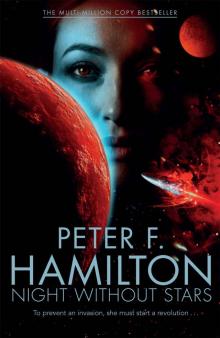 A Night Without Stars
A Night Without Stars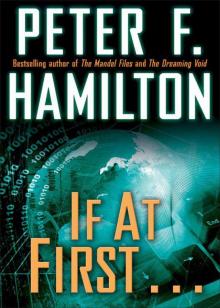 If at First . . .
If at First . . . The Neutronium Alchemist
The Neutronium Alchemist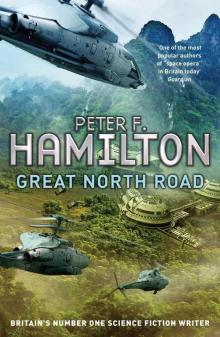 Great North Road
Great North Road Misspent Youth
Misspent Youth Pandora's Star
Pandora's Star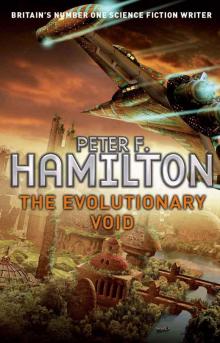 The Evolutionary Void
The Evolutionary Void The Dreaming Void
The Dreaming Void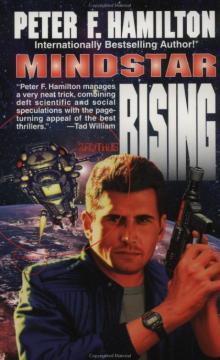 Mindstar Rising
Mindstar Rising The Temporal Void
The Temporal Void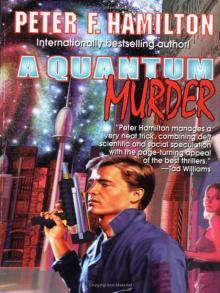 A Quantum Murder
A Quantum Murder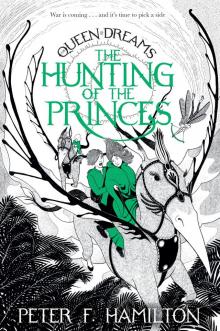 The Hunting of the Princes
The Hunting of the Princes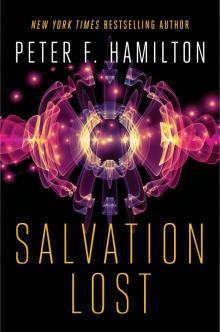 Salvation Lost
Salvation Lost The Dreaming
The Dreaming Salvation
Salvation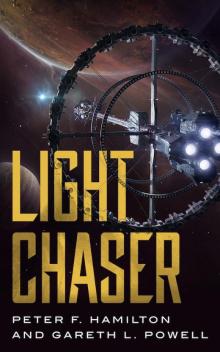 Light Chaser
Light Chaser The Mandel Files, Volume 2: The Nano Flower
The Mandel Files, Volume 2: The Nano Flower![The Saints of Salvation [British Ed.] Read online](http://i1.bookreadfree.com/22/the_saints_of_salvation_british_ed__preview.jpg) The Saints of Salvation [British Ed.]
The Saints of Salvation [British Ed.]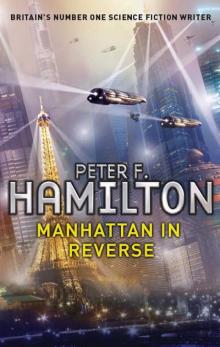 Manhattan in Reverse
Manhattan in Reverse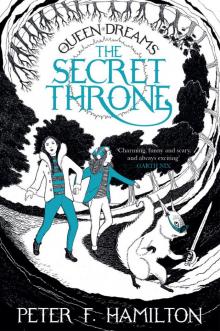 The Secret Throne
The Secret Throne A Window Into Time
A Window Into Time A Second Chance at Eden
A Second Chance at Eden The Nano Flower
The Nano Flower The Confederation Handbook
The Confederation Handbook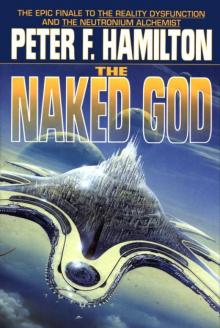 The Naked God
The Naked God The Saints of Salvation
The Saints of Salvation The Void Trilogy 3-Book Bundle
The Void Trilogy 3-Book Bundle The Abyss Beyond Dreams
The Abyss Beyond Dreams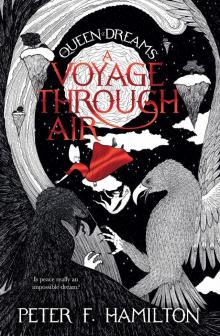 A Voyage Through Air
A Voyage Through Air Judas Unchained
Judas Unchained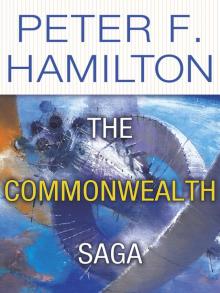 The Commonwealth Saga 2-Book Bundle
The Commonwealth Saga 2-Book Bundle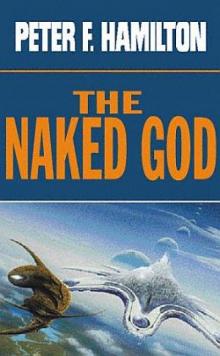 The Naked God - Flight nd-5
The Naked God - Flight nd-5 Night Without Stars (Chronicle of the Fallers Book 2)
Night Without Stars (Chronicle of the Fallers Book 2) Neutronium Alchemist - Conflict nd-4
Neutronium Alchemist - Conflict nd-4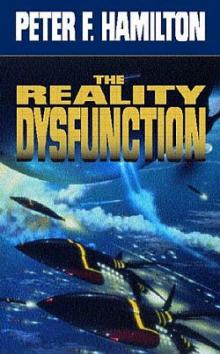 Reality Dysfunction - Expansion nd-2
Reality Dysfunction - Expansion nd-2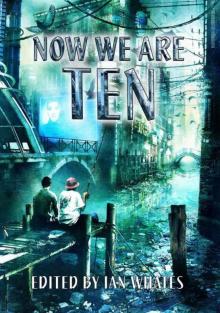 Now We Are Ten: Celebrating the First Ten Years of NewCon Press
Now We Are Ten: Celebrating the First Ten Years of NewCon Press Neutronium Alchemist - Consolidation nd-3
Neutronium Alchemist - Consolidation nd-3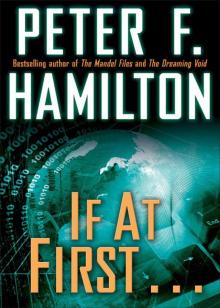 If at First . . . (Short Story)
If at First . . . (Short Story) A Second Chance at Eden nd-7
A Second Chance at Eden nd-7 Judas Unchained cs-2
Judas Unchained cs-2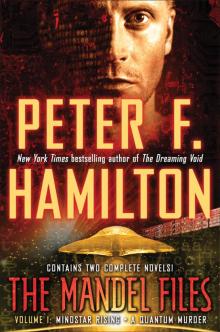 The Mandel Files, Volume 1
The Mandel Files, Volume 1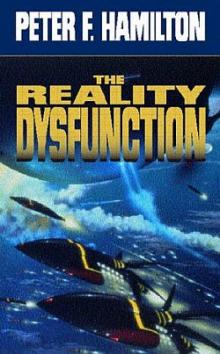 Reality Dysfunction — Emergence nd-1
Reality Dysfunction — Emergence nd-1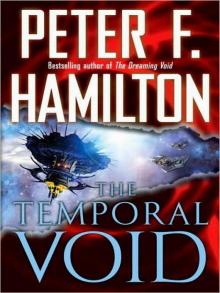 The Temporal Void (ARC)
The Temporal Void (ARC) The Mandel Files
The Mandel Files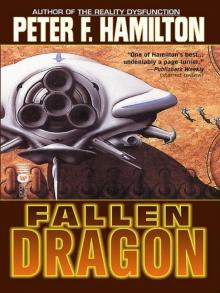 Fallen Fragon
Fallen Fragon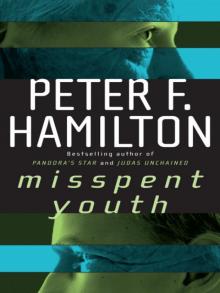 Misspent Youth (commonwealth saga)
Misspent Youth (commonwealth saga)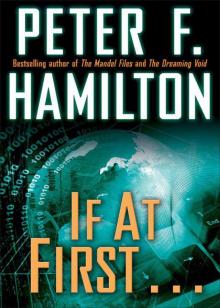 If at First...
If at First... Best of British Science Fiction 2016
Best of British Science Fiction 2016 The Mandel Files, Volume 2
The Mandel Files, Volume 2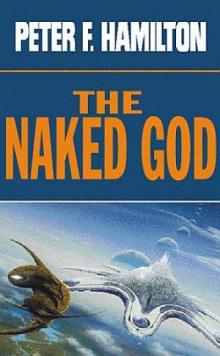 The Naked God - Faith nd-6
The Naked God - Faith nd-6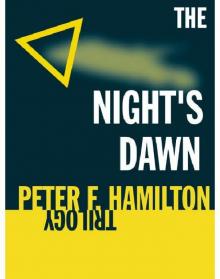 The Night's Dawn Trilogy
The Night's Dawn Trilogy Pandora's Star cs-2
Pandora's Star cs-2 A Window into Time (Novella)
A Window into Time (Novella)